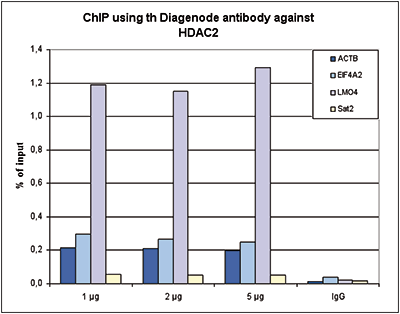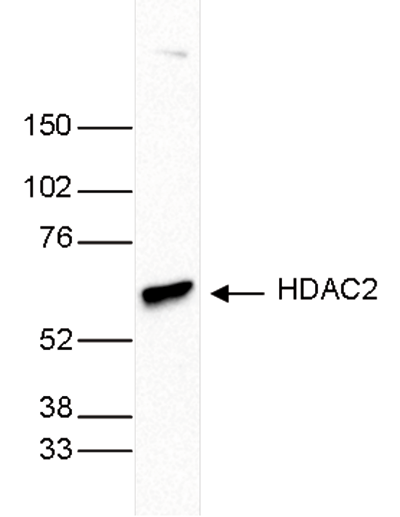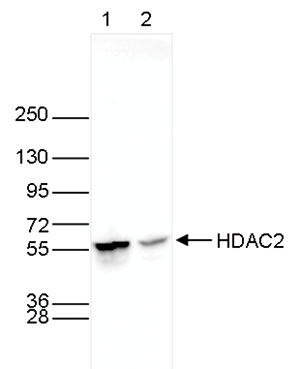
HDAC2 monoclonal antibody
| 货号 | C15200201 | 售价(元) | 咨询 |
| 规格 | 50ug | CAS号 |
- 产品简介
- 相关产品
Alternative names: HD2, RPD3, YAF1
Monoclonal antibody raised in mouse against human HDAC2 (Histone deacetylase 2), using a KLH-conjugated synthetic peptide containing a sequence from the C-terminal region of the protein.
| Lot | 001 |
|---|---|
| Concentration | 2.0 µg/µl |
| Species reactivity | Human |
| Type | Monoclonal |
| Purity | Protein A purified |
| Host | Mouse |
| Precautions | This product is for research use only. Not for use in diagnostic or therapeutic procedures. |
| Applications | Suggested dilution | References |
|---|---|---|
| ChIP/ChIP-seq * | 1 μg/IP | Fig 1, 2 |
| Western Blotting | 1:1,000 | Fig 3, 4 |
| Immunofluorescence | 1:500 | Fig 5 |
* Please note that the optimal antibody amount per IP should be determined by the end-user. We recommend testing 1-5 μg per IP.
- 上一页: Pol II monoclonal antibody
- 下一页: H3K9me2 Antibody









